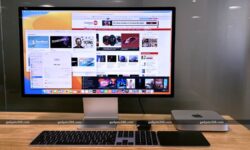Verizon Unveils 5G Coverage Maps
Verizon now shows you exactly where it has 5G in each of the 18 cities it covers. That’s a big step forward.
Verizon 5G is ready for its true public debut, seven months after its initial launch. Verizon is spinning out boldly colored 5G coverage maps, and the coverage it’s claiming is much better than what we saw in our tests in Chicago, Providence, and New York City.
The new maps make bold claims. Verizon now has some 5G in 18 cities, and it says it will have 30 by the end of the year. At least outdoors, Verizon says it covers almost all of downtown Boise, Idaho, and Minneapolis, Minnesota, with 5G, for instance. In Chicago, Verizon’s new map pledges coverage pretty much all throughout the Loop, West Loop, and River North.

And the maps are quirky enough for me to think they just might be honest. Verizon’s map for Sioux Falls, South Dakota, shows coverage only along one stretch of N Phillips Avenue. Its map for Houston shows most of the Museum District, but otherwise, only little patches of neighborhoods covered.

This goes to my frustration with Verizon’s claim that it has “5G built right.” While it’s great that it’s now being much more honest about where its 5G is available, the maps show that maybe Verizon shouldn’t be pledging to cover some neighborhoods it claims to cover yet.
In Wicker Park, Chicago, for instance, Verizon 5G courses up several of the major arteries but does not cover any of the more residential avenues between them. Verizon can argue that means 5G is in Wicker Park, but Wicker Park residents will still probably be pretty frustrated.
The new maps show a lot more coverage than I experienced when I tested the network this summer and fall. That’s great; I think it means the network is expanding.
In Harlem, for instance, I only found Verizon 5G along Eighth Avenue between 132-134 Sts, and at the corner of 116th Street and Park Avenue. According to Verizon’s new map, if I’d done the same walk today, I would have caught the network all the way down to 129th Street along Eighth, as well as at 120th and Sixth. Does that mean Verizon’s 5G “covers Harlem,” though?

Verizon’s 5G relies on millimeter wave, a relatively new technology that our tests have shown can only get a 600- to 800-foot radius from a cell site right now. That will improve with new devices, such as home internet receivers based on new Qualcomm antennas, which may have up to six times the range we’ve seen so far, but that distance is what we’ve seen testing with current consumer phones.
Spotty coverage has been compounded, analysts have told me, by two problems. First of all, Verizon started to market cities where they had only turned on a few cell sites. Second, for best coverage right now, the angle of the millimeter-wave cell must be properly aligned with the angle of a 4G cell at the same location, and that isn’t always true. As Verizon optimizes the arrangement of its 4G and 5G cells, coverage could further improve.
Because it doesn’t really penetrate buildings, millimeter wave has very different coverage shapes than we’re used to from 4G. A site placed at an intersection doesn’t actually create a bubble 800 feet in every direction; more, it courses up nearby streets in a primarily (but not entirely) line-of-sight fashion.
If you can get into a coverage zone, our tests have showed spectacular speeds; 1Gbps down is pretty normal.
For what it’s worth, Sprint offers maps for its nine 5G cities and T-Mobile has maps for its six. AT&T has no maps, but AT&T also isn’t selling 5G to consumers.
Verizon is the current leader in our Race to 5G rankings because it offers the most 5G devices of any carrier. Now that it’s also offering more honest coverage maps, it’ll be easier to decide whether making the jump to 5G is worth it for you, or whether you should wait for the next generation of devices.




